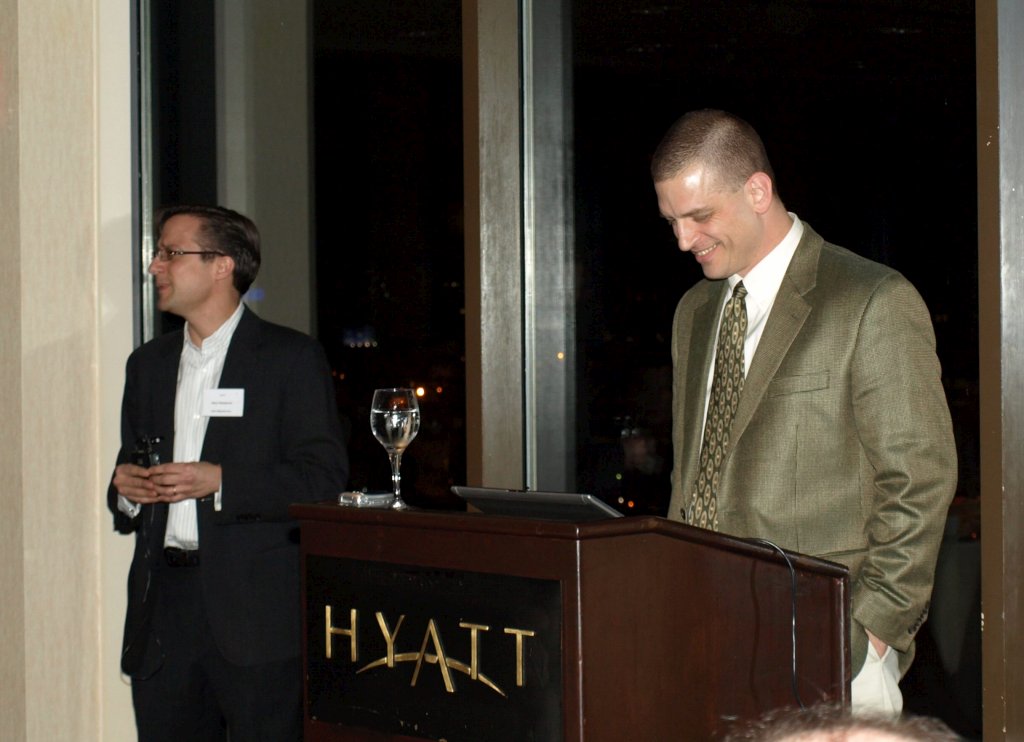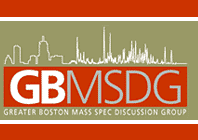GBMSDG Meeting Archives
November 17, 2009
Guest Speaker
Jarrod Marto
Dept. of Biological Chemistry & Molecular Pharmacology
Harvard Medical School
Dept. of Cancer Biology and Blais Proteomics Center
Dana-Farber Cancer Institute
Multidimensional Fractionation Strategies
for Quantitative Proteomics
Location
Hyatt Regency
575 Memorial Drive, Cambridge
Sponsored by
New Objective
Special thanks to New Objective for sponsoring this event. It is the active participation of our sponsors that allows us to keep the fees for membership, dinners, drinks, speakers, etc. so low.
TALK ABSTRACT:
Normal and aberrant biological phenotypes are driven by numerous interactions of proteins and other biomolecules. As a result, there is growing appreciation that so-called systems level experimental strategies can augment traditional hypothesis-driven approaches for characterization of cellular response to stress, infection, disease, and other biological or environmental perturbations. Limited detection and dynamic range on current mass spectrometry instruments are the primary limiting factors that impede true proteome-scale studies. Hence, faced with the difficulties inherent to the generation of a "complete" proteome catalog, many researchers have opted instead to pursue targeted analyses of protein sub-classes or specific post-translational modifications. Anecdotal evidence suggests that enriched biological materials used in focused studies nevertheless span a wide range of sample complexity, and can often yield a protein and peptide concentration range that exceeds the analytical capabilities of modern mass spectrometry technology.
Collectively these data and observations have catalyzed a plethora of work designed to improveoverall peak capacity of peptide and protein separations, with the ultimate goal of reducing the number of analytes presented for MS/MS per unit time. Multidimensional fractionation has emerged as the most compelling means to facilitate in-depth analysis of complex peptide mixtures derived from biological extracts. To date, the combination of strong cation exchange (SCX) chromatography and reversed phase (RP) chromatography is the most widely used system. Despite many successful studies, it is clear that biological complexity often exceeds the peak capacity of SCX-RP. Recently Gilar et al. introduced a multidimensional fractionation platform based on two stages of reversed phase operated at high and low pH, respectively. Here we describe a true nanoflow (≤5nL/min), multi-dimensional LC platform based on a modified Waters NanoACQUITY system that facilitates use of either RP or SCX separation in the first-dimension. Data that describe the analytical figures of merit for each approach will be presented along with results from multiple studies designed to probe (i) molecular mechanisms in transcription initiation, (ii) disrupted differentiation in leukemogenesis, and (iii) proteome response to small molecule therapeutics used in the context of multiple myeloma.
Event photos

Dinner sponsored by New Objective

Jarrod Marto

Lecture
Photo Credit: Roger Kautz

